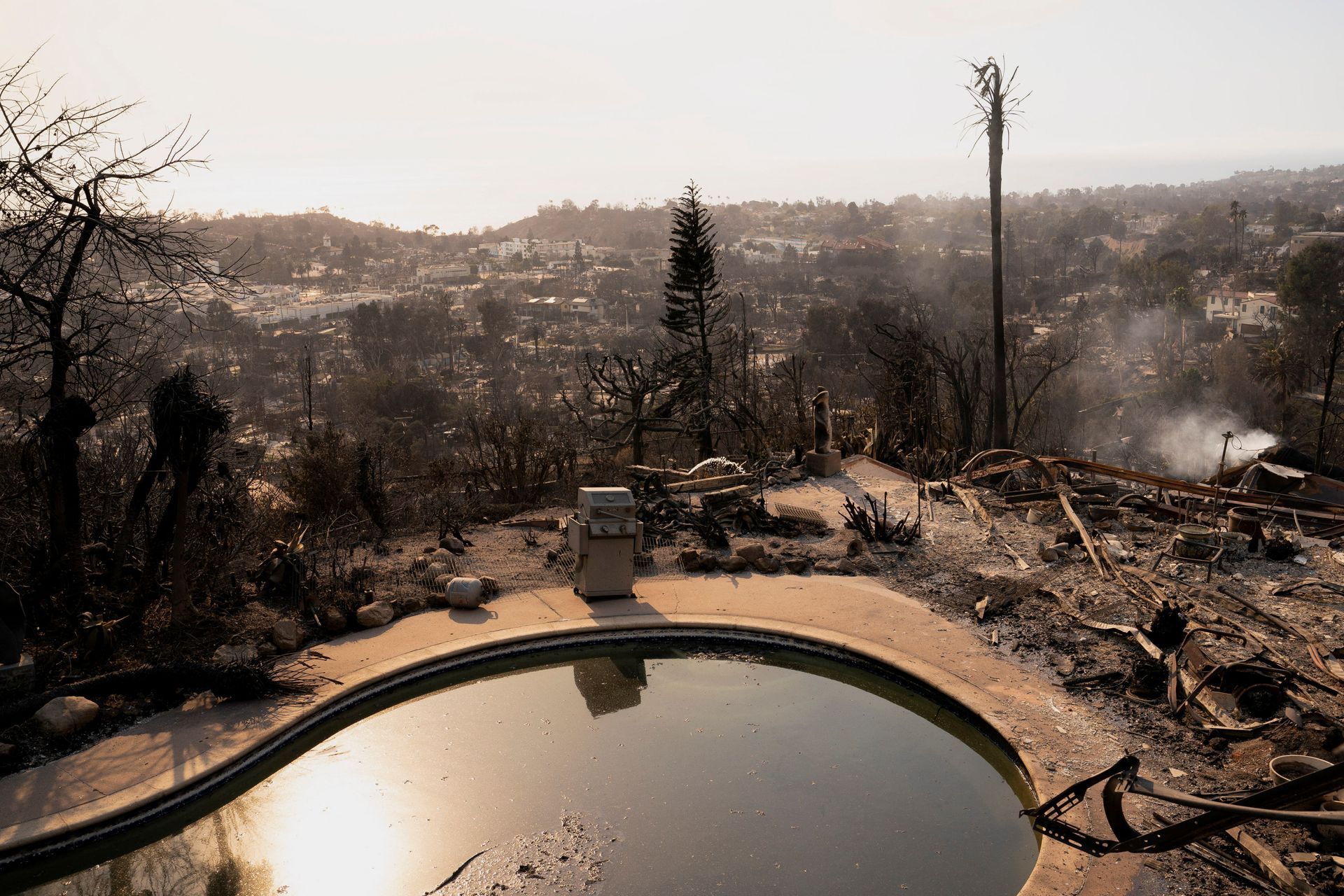Swimming Pool Safety After a Wildfire – What You Need to Know

After a wildfire, returning to your home can be overwhelming, and assessing the safety of your swimming pool may not be at the top of your list. However, wildfires can significantly impact pool water quality, equipment, and surrounding areas, creating potential hazards for you and your family. Here’s how to ensure your pool is safe and ready for use after a fire.
Understanding the Impact of Wildfires on Pools
Wildfires can introduce debris, ash, and harmful chemicals into your swimming pool. These contaminants affect water quality and can damage filtration systems, making your pool unsafe for swimming. Common wildfire-related issues include:
- Ash and Soot: These can change the pH and alkalinity of the water, making it acidic and harmful to skin and eyes.
- Chemical Contamination: Toxic substances from fire retardants and melted materials may leach into the water.
- Damaged Equipment: High heat and soot can damage pool pumps, filters, and electrical systems.
Steps to Ensure Pool Safety After a Fire
Follow these steps to restore your pool and make it safe again:
1. Inspect the Pool Area
Begin by examining the pool and its surroundings.
- Remove large debris: Use a skimmer or net to remove branches, leaves, and other visible debris.
- Check pool equipment: Inspect pumps, filters, and electrical components for fire or heat damage. Avoid turning them on until they’ve been inspected by a professional.
2. Test Water Quality
Testing the water is crucial after a wildfire.
- Use a pool water testing kit to check pH, chlorine levels, and overall water balance.
- Look for unusual smells or discoloration, which may indicate chemical contamination.
- If unsure, consult a pool maintenance professional for advanced testing.
3. Shock and Filter the Pool
After removing debris and testing the water, you’ll likely need to treat the pool:
- Shock the water with a higher-than-normal dose of chlorine to kill bacteria and neutralize contaminants.
- Run the filtration system for at least 24–48 hours continuously to clear out particles and toxins.
4. Drain and Refill (If Necessary)
If the water quality is beyond repair or if toxic chemicals are present, draining and refilling the pool may be necessary. Always follow local guidelines for draining pool water, especially in areas affected by wildfires.
5. Inspect Pool Structure and Surroundings
Wildfires can weaken pool tiles, coping, or decks. Check for:
- Cracks in the structure: Heat can cause cracks in plaster or concrete.
- Damage to decking materials: Wooden decks may need repair or replacement.
- Tree stability: Nearby trees or structures weakened by the fire can pose a risk to the pool area.
Preventing Pool Hazards in Future Wildfires
To protect your pool and ensure safety during future wildfire events, consider these proactive steps:
- Install a pool cover: A durable, fire-resistant pool cover can minimize debris and ash contamination.
- Maintain defensible space: Keep the area around the pool free of overhanging branches, flammable furniture, and vegetation.
- Regular maintenance: Routine inspections and cleaning can prevent long-term damage from wildfire contaminants.
- Add backup power: A generator can keep pool systems running during outages caused by wildfires.
While your swimming pool might seem like a low-priority concern after a wildfire, ensuring its safety is essential for your family’s health and well-being. By addressing contamination, repairing damage, and taking preventative measures, you can restore your pool to a safe, enjoyable space.
For more information about wildfire recovery and resilient outdoor living solutions, contact us today. Together, we’ll help you rebuild with safety and peace of mind.

